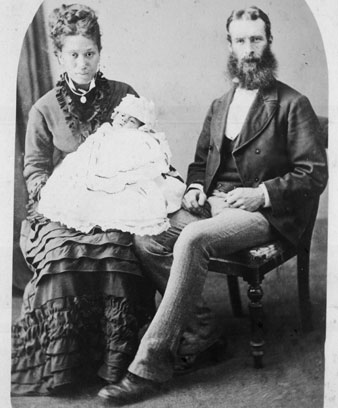Story summary
Intermarriage is marriage between partners from different ethnic groups.
Tribal intermarriage
In traditional Māori society, marriage between people from different tribes was sometimes used to form political alliances, unite resources and make peace between tribes.
Early intermarriage
Crews of visiting European ships often formed relationships with Māori women. From the 1790s some European men lived with Māori as part of the tribe, and became known as Pākehā–Māori. They often married Māori women.
The first official marriage was in 1823, between Maria Ringa of Ngāpuhi and Danish whaler Phillip Tapsell. The marriage did not last, but Tapsell married again twice, both times to Māori women.
Colonial society
Some early missionaries opposed intermarriage. But some people believed that intermarriage with Pākehā would make Māori more ‘civilised’, and, later, the government encouraged intermarriage. Māori women could inherit land from both their parents, so some Pākehā married them in the hope of acquiring land.
After 1840 more European women arrived. Some Pākehā men left their Māori wives and children for a more ‘respectable’ marriage with a Pākehā. A few Pākehā women married Māori men, but this was disapproved of.
In the late 19th century Māori were thought to be a dying race, which could only survive by assimilating with Pākehā.
Asians and Dalmatians
Chinese and Indians were known as ‘race aliens’, and suffered a lot of prejudice. Intermarriage between European women and Asians was strongly disapproved of. However, until the mid-20th century the Chinese and Indian communities were mainly single men. Many eventually married Pākehā or Māori women.
Dalmatian gum diggers in the Far North were mostly male. Many married Māori women.
Māori urban migration
Many Māori moved into the cities after the Second World War. They had much more contact with non-Māori, and intermarriage increased.
Opposing intermarriage
Some groups have resisted intermarriage, and prefer to marry people from within their own communities. Some rabbis discouraged intermarriage, which they thought would weaken New Zealand’s small Jewish community. Some Māori also prefer to have relationships with other Māori, or with people from their own tribe.
Multi-cultural New Zealand
In the 2000s New Zealand was increasingly multi-cultural, with many people from the Pacific and Asia. The children of mixed marriages were more likely themselves to intermarry.





